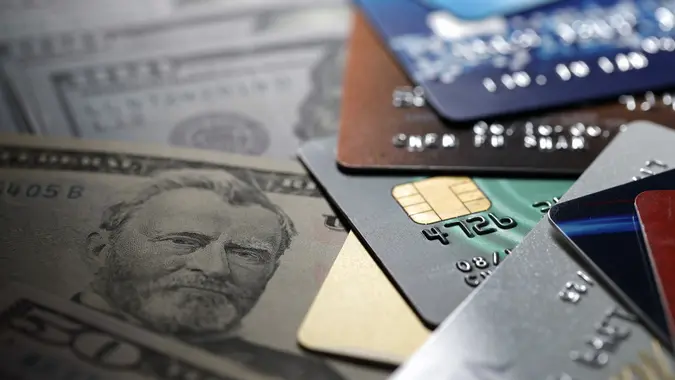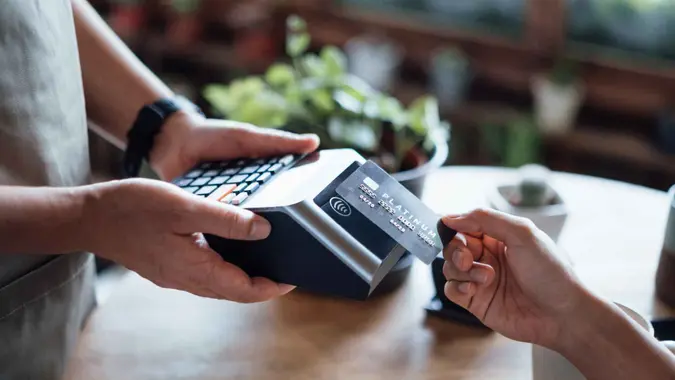Locating Items on Your Credit Card Bill
Commitment to Our Readers
GOBankingRates' editorial team is committed to bringing you unbiased reviews and information. We use data-driven methodologies to evaluate financial products and services - our reviews and ratings are not influenced by advertisers. You can read more about our editorial guidelines and our products and services review methodology.

20 Years
Helping You Live Richer

Reviewed
by Experts

Trusted by
Millions of Readers
Sometimes a credit card billing statement can bring with it a surprising monthly total, one you just don’t understand at all. If you’ve found yourself in the position of seeing unfamiliar charges without the knowledge of just what those charges mean, you’re not alone. The good news is that you don’t have to be defeated by your monthly bill. By educating yourself on the items located on your billing statement, you can not only make yourself aware of fees you’re paying, but also make more informed spending decisions in the future.
So What’s On Your Billing Statement?
Let’s cut to the chase. At the end of the month, after you’ve used your credit card, you will receive a billing statement. It comes with a large number of charges and definitions. Let’s look at what some of these are:
- New charges. The new charges found on your billing statement represent purchases you’ve made to your credit card within the most recent bill cycle. In this section, you can review charges made to ensure everything looks right.
- Previous balance. The previous balance represents the total amount owed on your previous bill. In this section, you can ensure that the number is consistent with your total due last month.
- Payments and credits. This section takes a look at the payments you’ve made to the credit card company. If you’ve sent a payment and it wasn’t received, it should be reflected in this section.
- Finance charges. Having a balance or not can still leave you vulnerable to finance charges. While they’re hard to avoid, it’s good to know how much they are, and what actions result in their increases and decreases.
- Grace period. This represents the amount of time a charge can remain on your card before being charged interest.
- Minimum payment. This is the lowest amount that you are allowed to pay on your bill.
- Payment due date. The payment due date is the date that has to be recorded as paid in the company’s computer.
- Credit limit. This number tells you the maximum amount that you are allowed to charge.
- Late fee. This fee is a penalty derived from your inability to pay by the due date.
Educating yourself on your credit card billing statement can work wonders in helping you manage your cards more responsibly. Why not give it a try?
 Written by
Written by 

























